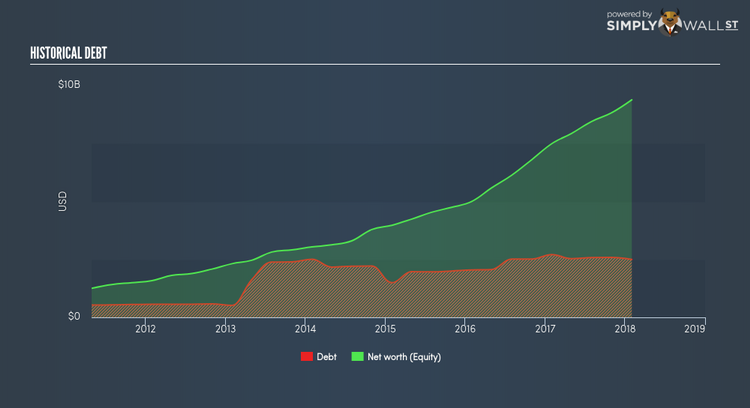What does Salesforcecom inc.’s (NYSE:CRM) Balance Sheet Tell Us About Its Future?

Salesforcecom inc. (NYSE:CRM), a large-cap worth US$90.53B, comes to mind for investors seeking a strong and reliable stock investment. Risk-averse investors who are attracted to diversified streams of revenue and strong capital returns tend to seek out these large companies. But, the health of the financials determines whether the company continues to succeed. This article will examine Salesforce.com’s financial liquidity and debt levels to get an idea of whether the company can deal with cyclical downturns and maintain funds to accommodate strategic spending for future growth. Note that this commentary is very high-level and solely focused on financial health, so I suggest you dig deeper yourself into CRM here. See our latest analysis for Salesforce.com
How much cash does CRM generate through its operations?
CRM’s debt levels have fallen from US$2.71B to US$2.50B over the last 12 months , which comprises of short- and long-term debt. With this debt payback, CRM currently has US$4.52B remaining in cash and short-term investments , ready to deploy into the business. Additionally, CRM has generated US$2.74B in operating cash flow during the same period of time, leading to an operating cash to total debt ratio of 109.54%, signalling that CRM’s current level of operating cash is high enough to cover debt. This ratio can also be a sign of operational efficiency as an alternative to return on assets. In CRM’s case, it is able to generate 1.1x cash from its debt capital.
Can CRM pay its short-term liabilities?
With current liabilities at US$10.13B, the company has not maintained a sufficient level of current assets to meet its obligations, with the current ratio last standing at 0.92x, which is below the prudent industry ratio of 3x.
Does CRM face the risk of succumbing to its debt-load?
With debt at 26.62% of equity, CRM may be thought of as appropriately levered. This range is considered safe as CRM is not taking on too much debt obligation, which can be restrictive and risky for equity-holders. We can test if CRM’s debt levels are sustainable by measuring interest payments against earnings of a company. Net interest should be covered by earnings before interest and tax (EBIT) by at least three times to be safe. In CRM’s case, the ratio of 4.61x suggests that interest is well-covered. High interest coverage serves as an indication of the safety of a company, which highlights why many large organisations like CRM are considered a risk-averse investment.
Next Steps:
CRM has demonstrated its ability to generate sufficient levels of cash flow, while its debt hovers at an appropriate level. But, its lack of liquidity raises questions over current asset management practices for the large-cap. Keep in mind I haven’t considered other factors such as how CRM has been performing in the past. You should continue to research Salesforce.com to get a better picture of the stock by looking at:
Future Outlook: What are well-informed industry analysts predicting for CRM’s future growth? Take a look at our free research report of analyst consensus for CRM’s outlook.
Valuation: What is CRM worth today? Is the stock undervalued, even when its growth outlook is factored into its intrinsic value? The intrinsic value infographic in our free research report helps visualize whether CRM is currently mispriced by the market.
Other High-Performing Stocks: Are there other stocks that provide better prospects with proven track records? Explore our free list of these great stocks here.
To help readers see pass the short term volatility of the financial market, we aim to bring you a long-term focused research analysis purely driven by fundamental data. Note that our analysis does not factor in the latest price sensitive company announcements.
The author is an independent contributor and at the time of publication had no position in the stocks mentioned.

